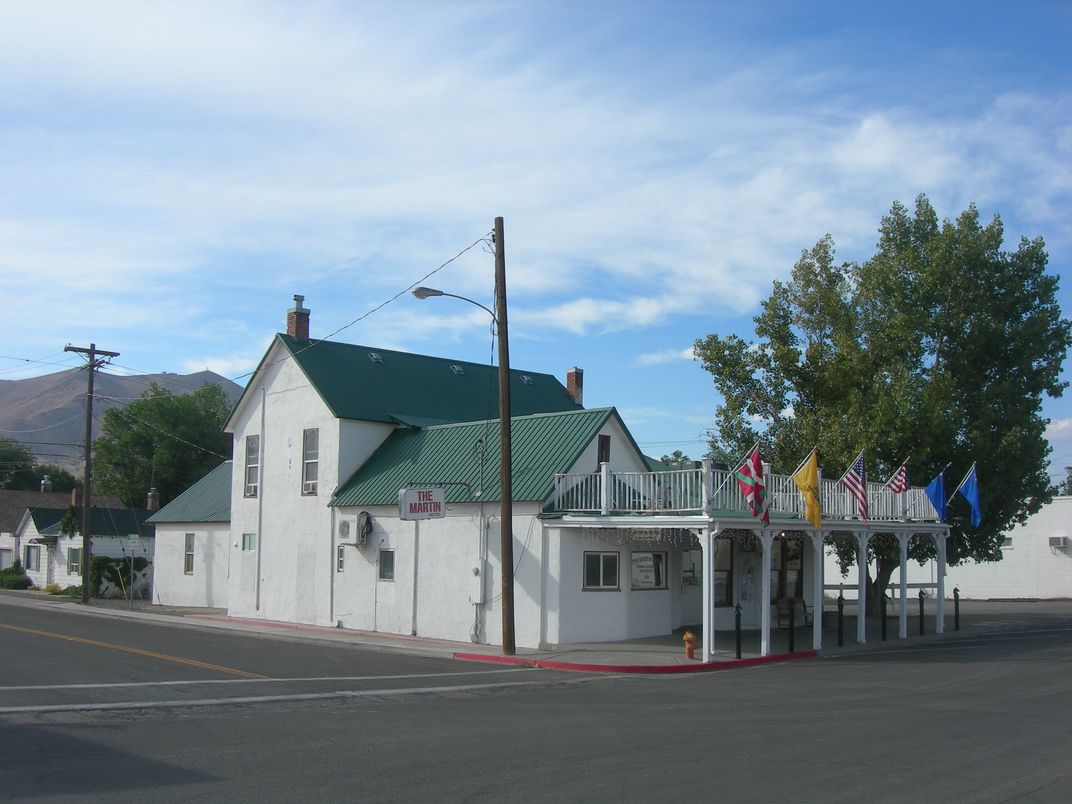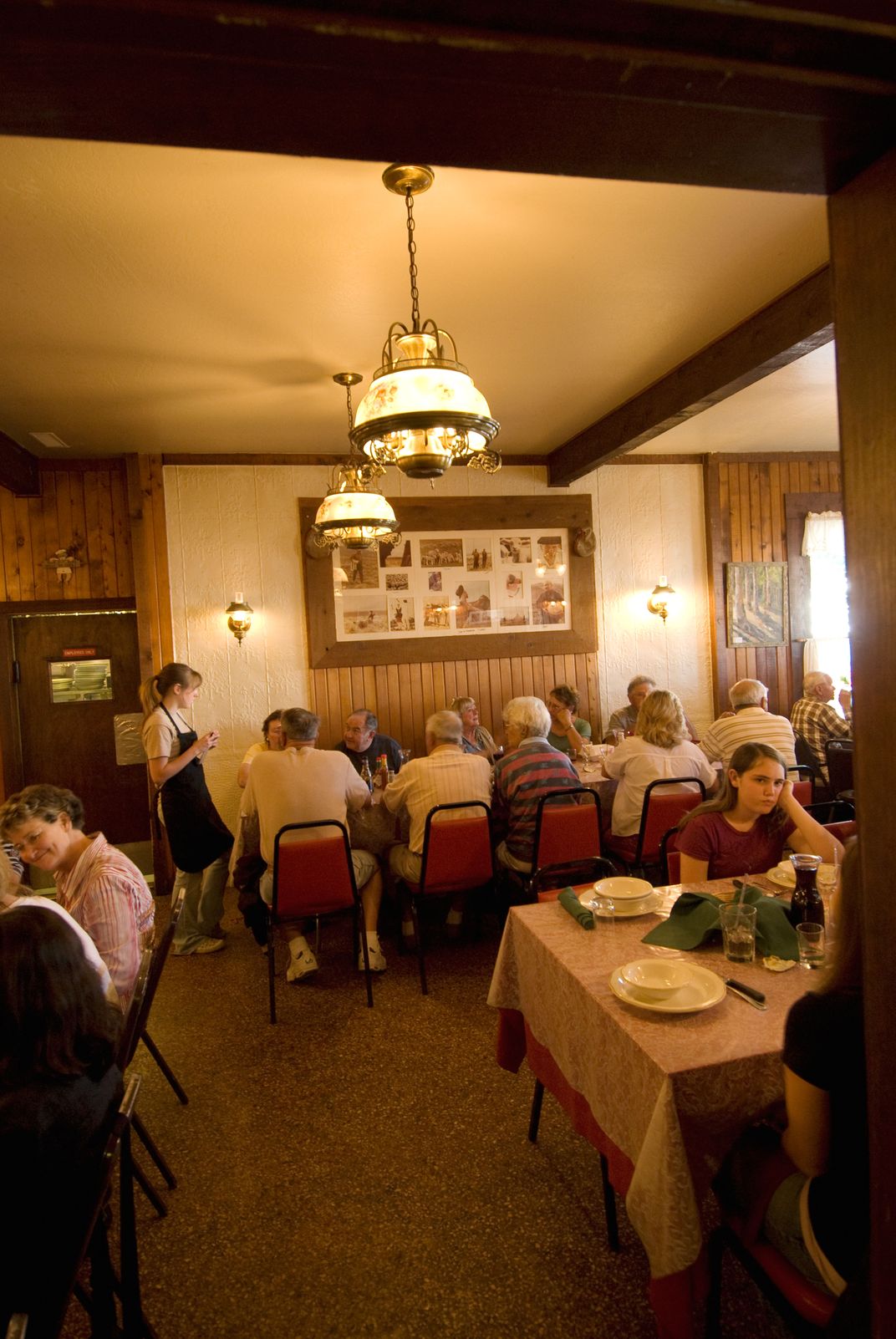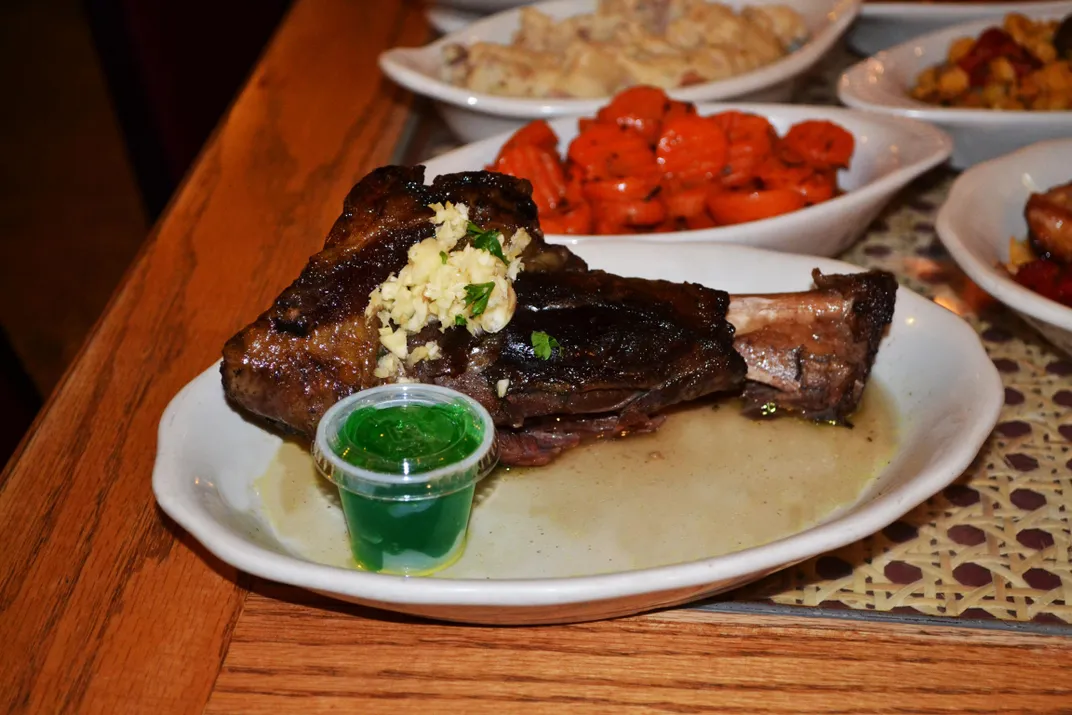How a Remote Nevada Town Became a Bastion of Basque Culture
Tiny Winnemucca, with its high concentration of Basque restaurants, is doing its part to preserve Basque traditions
/https://tf-cmsv2-smithsonianmag-media.s3.amazonaws.com/filer/66/de/66de6b88-e4c5-4688-8f09-7667c2019e83/basque_traditional_dancers_at_basque_festival_in_winnemucca_nevada-resize.jpg)
Walking into the Martin Hotel in Winnemucca, Nevada, is like transporting yourself to a different time and place. The wood-paneled restaurant was first built in 1878 as a brothel. Then, it turned into an Italian restaurant. It wasn’t until 1913 that the Martin Hotel became what it is today: a thriving Basque restaurant catering to the large Basque population (estimated to be 4 percent of residents) in and around small Winnemucca.
Much of the land in Winnemucca (population: 7,788) is owned by descendents of the immigrants that came to the United Staes from Basque Country, a region straddling the border between France and Spain, in the 1800s. Basque immigration to the American West occurred in stages, says Xabier Irujo, director of the Center for Basque Studies at the University of Nevada, Reno. The first group arrived in the 1600s as explorers. There was a second wave of immigrants in the 1850s, pushed out of Basque Country during war and compelled to take part in the California Gold Rush.

No one truly knows the ancient history of the Basque people. The oldest ethnic group in Europe still survivng today, the Basques are speculated to be direct descendents of hunter-gatherers in Europe 35,000 years ago. Thanks to the mountainous, relatively infertile land they have occupied in the foothills of the Pyrenees Mountains and near the Bay of Biscayne, the Basques were largely left to themselves—until the 1500s when Castilian forces finally won control of the land. Even then, though, the Basques were given a large amount of autonomy. In the 1800s, however, the Carlist Civil Wars in Spain—a 40-year fight between Liberal-Republican and Traditionalist-Carlist parties over how the country should be ruled—led to Basque country losing some of its rights. They were again targeted in the 1930s, by Francisco Franco in the Spanish Civil War. The Basques wanted independence; Franco did not approve. At that point, all their autonomy and rights vanished. But in 1975, Franco died, and the Basques regained their independence.
“During the 19th century, the Basque state lost independence,” Irujo says. “Three main wars [the First, Second, and Third Carlist Wars] were fought in the country and many people were exiled or left after the defeat.”
From Basque country, the Basques immigrated to a number of places around the world: Australia, Mexico, Chile, the Philippines, and more. In the United States, Basques mostly settled in Wyoming, Nevada, Idaho and California. They came to work in the gold mines across the American West, but found that they had better income hunting or raising sheep to sell as meat to the miners—and that set the groundwork for the next influx of Basque immigrants. Starting in the 1880s, the incoming Basque population almost exclusively took sheepherder or cattle jobs. Now, about 60,000 Basque people live in the United States.
So why the dense population in and around Winnemucca? First, Irujo says, there was just a lot of land.
“Nevada is vast,” he says. “There was a lot of land available for anyone who wanted to take it. If you worked a piece of land for more than four years, you could claim ownership on it [as part of the Homestead Act]. Plus, there was no war.”
Not to mention, Winnemucca is a crossroads town. It’s right on the former Central Pacific and Southern Pacific railways, now Amtrak's California Zephyr line, and was a natural stopping point, halfway between Salt Lake City and San Francisco, for those heading west. Based on mining and livestock industry opportunities alone, not to mention the already burgeoning Basque population there, it was an ideal place to settle.
“The first generation placed an emphasis on integrating into the culture,” Irujo says. At first, they faced prejudice—as do almost all newcomers to an area—so they did what they could to become part of the culture. “The Basques organized themselves in order to provide for the people who were coming to the Americas. They paid for English teachers so they could integrate.”
The second generation, though, felt like they had assimilated enough—they knew English and American customs. But they realized they were losing their own traditions—their Euskara language, which has no known linguistic relatives; traditional dances, like aurresku, romerías and jota; foods, like pinxta, salt cod, and pastel vasco; and games like pelota (handball) and mus (a card game)—that they wanted to keep alive for future generations.
“The second generation wasn’t sheepherders,” Irujo says. “Many among them started to study in high school and college. They started to feel that they had learned the language and already integrated, but that they were lacking in the Basque aspect of their identity. This is when Basque boarding houses and restaurants popped up. The first generation needed meeting places to speak to people in their own language. The second generation didn’t need them anymore, so they started building Basque centers where they could keep their traditions, their way of eating, their music, their everything, alive.”

Winnemucca has its own traditions for ensuring the culture gets the recognition it’s due. Social organizations called Basque Clubs—founded in communities across the country, but in high concentration in California, Idaho and Nevada—work to preserve Basque heritage, and Winnemucca has had its own club since the 1940s. Every June, the town hosts a Basque festival—2020 will be the 42nd year of the festival, complete with a parade and Basque dancing and sports demonstrations. Not to mention, Winnemucca has the most Basque restaurants per capita in the west.
“The culture is alive,” Irujo says.
The Martin Hotel has played a large role in maintaining the Basque culture of the area. Starting in 1913, the first owners, a French couple named Augustine and Elisee Martin, served a clientele of mainly Basque immigrants, offering a lineup of Basque dishes. During this time, the building had 25 boarding rooms for Basque shepherds.
“Each shepherd would take a flock out into the desert and keep them out there enough months to fatten them up," says John Arant, current owner of the Martin Hotel. "Then they’d bring the flock in and get paid. They’d then come to the Martin, giving their earnings to the innkeepers. Augustine would keep track of the money, charging them for food and board. The shepherds would eat as a community a couple times a day. When they just about ran out of money, Augustine would help them find a new flock.”
The couple owned the restaurant for about ten years, then a series of Basque families owned the property. Arant’s family took it over in the 1970s—the first time in more than 50 years that the restaurant hadn’t been owned by a Basque family. Well, supposedly.
“The rumor in the family is that my great-grandmother was Basque, because she could speak and write the language,” Arant says. “But she would never admit it. At the turn of the last century, there was a prejudice against the newcomers.”
Today, the restaurant helps sponsor the Basque festival, and it hosts the local Basque Club’s meetings as well as a mus tournament four times a year. Similar to bridge, mus has its own deck of cards specific to the game, which is played completely in Euskara. The Basque Clubs that participate in the tournament use the game and the event as a way to connect the next generation with the culture; the children learn the language as they learn the game.
Most of all, though, the Martin Hotel is preserving Basque heritage through its food. The food is all served family style, as is Basque tradition, with everyone joining together at community tables. Basque entrées on the menu (including solomo, a Basque pork loin; battered and fried sweetbreads; and lamb shanks) are decades old and still made exactly the same way.
“We have an old restaurant where the actual tradition is alive,” Arant says. “Even if you go to a French restaurant, you’re not getting a lot of the culture. You’re just getting great food. But if you go to a Basque restaurant, you’re actually getting immersed in the culture. In the food, in the style, in the old recipes. It’s getting that connection to something that’s ancient, and that’s very unique.”
The Martin Hotel's Basque Lamb Shanks

This recipe, meant to be served in a large family-style setting, came from Rosie Uriguen in the 1950s. She and her husband, Sil, owned the Martin Hotel for about 20 years, and many of the Basque recipes on the menu are hers.
Serves 6
Ingredients:
6 lamb shanks
1 cup chopped fresh garlic
1/4 cup Martin Lamb Seasoning, mixed with these proportions (1 cup salt, 1/4 cup granulated garlic, 1/3 cup black pepper, 1/8 cup rosemary)
2 cups Pisano wine
6 cups water
1/2 cup chicken base
Directions:
1. Preheat oven to 350 degrees.
2. Place shanks in one to two layers in a large sauté pan, depending on what fits. Sprinkle each layer with the lamb seasoning and fresh garlic.
3. Bake for 1 hour.
4. Remove from oven and add mixture of wine, water and chicken base.
5. Cover with plastic wrap and aluminum foil and cook for 2 hours, until tender. Serve with mint jelly on the side.
/https://tf-cmsv2-smithsonianmag-media.s3.amazonaws.com/accounts/headshot/JenniferBillock.png)
/https://tf-cmsv2-smithsonianmag-media.s3.amazonaws.com/accounts/headshot/JenniferBillock.png)